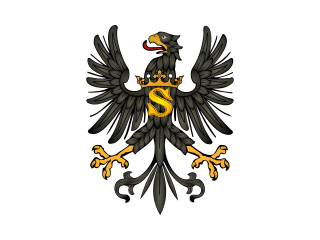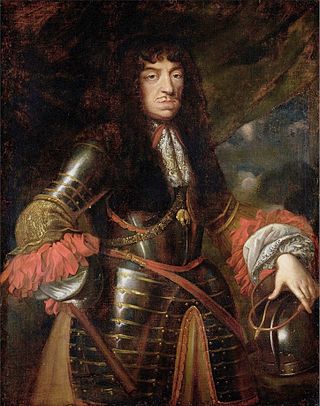| Years in Sweden: | 1653 1654 1655 1656 1657 1658 1659 |
| Centuries: | 16th century · 17th century · 18th century |
| Decades: | 1620s 1630s 1640s 1650s 1660s 1670s 1680s |
| Years: | 1653 1654 1655 1656 1657 1658 1659 |


Events from the year 1656 in Sweden
| Years in Sweden: | 1653 1654 1655 1656 1657 1658 1659 |
| Centuries: | 16th century · 17th century · 18th century |
| Decades: | 1620s 1630s 1640s 1650s 1660s 1670s 1680s |
| Years: | 1653 1654 1655 1656 1657 1658 1659 |


Events from the year 1656 in Sweden

1656 (MDCLVI) was a leap year starting on Saturday of the Gregorian calendar and a leap year starting on Tuesday of the Julian calendar, the 1656th year of the Common Era (CE) and Anno Domini (AD) designations, the 656th year of the 2nd millennium, the 56th year of the 17th century, and the 7th year of the 1650s decade. As of the start of 1656, the Gregorian calendar was 10 days ahead of the Julian calendar, which remained in localized use until 1923.

Charles X Gustav, also Carl Gustav, was King of Sweden from 1654 until his death. He was the son of John Casimir, Count Palatine of Zweibrücken-Kleeburg and Catherine of Sweden. After his father's death he also succeeded him as Pfalzgraf. He was married to Hedwig Eleonora of Holstein-Gottorp, who bore his son and successor, Charles XI. Charles X Gustav was the second Wittelsbach king of Sweden after the childless king Christopher of Bavaria (1441–1448) and he was the first king of the Swedish Caroline era, which had its peak during the end of the reign of his son, Charles XI. He led Sweden during the Second Northern War, enlarging the Swedish Empire. By his predecessor Christina, he was considered de facto Duke of Eyland (Öland), before ascending to the Swedish throne. From 1655 to 1657, he was also Grand Duke of Lithuania.

The Duchy of Prussia or Ducal Prussia was a duchy in the region of Prussia established as a result of secularization of the Monastic Prussia, the territory that remained under the control of the State of the Teutonic Order until the Protestant Reformation in 1525.

John II Casimir was King of Poland and Grand Duke of Lithuania from 1648 to his abdication in 1668 as well as titular King of Sweden from 1648 to 1660. He was the first son of Sigismund III Vasa with his second wife Constance of Austria. John Casimir succeeded his older half-brother, Władysław IV Vasa.

Brandenburg-Prussia is the historiographic denomination for the early modern realm of the Brandenburgian Hohenzollerns between 1618 and 1701. Based in the Electorate of Brandenburg, the main branch of the Hohenzollern intermarried with the branch ruling the Duchy of Prussia, and secured succession upon the latter's extinction in the male line in 1618. Another consequence of the intermarriage was the incorporation of the lower Rhenish principalities of Cleves, Mark and Ravensberg after the Treaty of Xanten in 1614.

The Deluge was a series of mid-17th-century military campaigns in the Polish–Lithuanian Commonwealth. In a wider sense, it applies to the period between the Khmelnytsky Uprising of 1648 and the Truce of Andrusovo in 1667, comprising the Polish theatres of the Russo-Polish and Second Northern Wars. In a stricter sense, the term refers to the Swedish invasion and occupation of the Commonwealth as a theatre of the Second Northern War (1655–1660) only; in Poland and Lithuania this period is called the Swedish Deluge, or less commonly the Russo–Swedish Deluge due to the simultaneous Russo-Polish War. The term "deluge" was popularized by Henryk Sienkiewicz in his novel The Deluge (1886).

The Second Northern War (1655–60), was fought between Sweden and its adversaries the Polish–Lithuanian Commonwealth (1655–60), the Tsardom of Russia (1656–58), Brandenburg-Prussia (1657–60), the Habsburg monarchy (1657–60) and Denmark–Norway. The Dutch Republic waged an informal trade war against Sweden and seized the colony of New Sweden in 1655, but was not a recognized part of the Polish–Danish alliance.

The Treaty or Peace of Oliva of 23 April (OS)/3 May (NS) 1660 was one of the peace treaties ending the Second Northern War (1655–1660). The Treaty of Oliva, the Treaty of Copenhagen in the same year, and the Treaty of Cardis in the following year marked the high point of the Swedish Empire.

The Treaty of Bromberg or Treaty of Bydgoszcz was a treaty between John II Casimir of Poland and Elector Frederick William of Brandenburg-Prussia that was ratified at Bromberg (Bydgoszcz) on 6 November 1657. The treaty had several agreements, including the Treaty of Wehlau, signed on 19 September 1657 by the Brandenburg–Prussian and Polish–Lithuanian envoys in Wehlau. Thus, the Treaty of Bromberg is sometimes referred to as treaty of Wehlau-Bromberg or Treaty of Wehlau and Bromberg.
Bogusław Radziwiłł was a Polish princely magnate and a member of the Polish-Lithuanian szlachta, or nobility. He was of the Radziwiłł magnate family. By birth he was an Imperial Prince of the Holy Roman Empire. He was a descendant of the famous knight, Zawisza the Black. Following the death of Janusz Radziwiłł, he briefly served as Grand Hetman of Swedish Lithuania.

The Battle of Warsaw took place near Warsaw on July 28–July 30 [O.S. July 18–20] 1656, between the armies of the Polish–Lithuanian Commonwealth and Sweden and Brandenburg. It was a major battle in the Second Northern War between Poland and Sweden in the period 1655–1660, also known as The Deluge. According to Hajo Holborn, it marked "the beginning of Prussian military history".

The Treaty of Labiau was a treaty signed between Frederick William I, Elector of Brandenburg and Charles X Gustav of Sweden on 10 November (O.S.) / 20 November (N.S.) 1656 in Labiau. With several concessions, the most important being the elevation of Frederick William I from a Swedish vassal to a full sovereign in the Duchy of Prussia and in Ermland, Charles X Gustav strove to "buy Frederick William's support" in the ongoing Second Northern War.

The Treaty of Königsberg was concluded on 7 January (O.S.) / 17 January (N.S.) 1656 during the Second Northern War. Frederick William I, the "Great Elector" of Brandenburg and duke of Prussia, was forced to join the Swedish camp and became a Swedish vassal for the Duchy of Prussia and Ermland. In a second treaty, negotiated on 24 February 1656 in Königsberg (Królewiec), Frederick William I concluded a defensive alliance with France.

Pomerania during the Early Modern Age covers the history of Pomerania in the 16th, 17th, and 18th centuries.

The relations between Denmark and Sweden span a long history of interaction. The inhabitants of each speak related North Germanic languages, which have a degree of mutual intelligibility. Both countries formed part of the Kalmar Union between 1397 and 1523, but there exists an inherited cultural competition between Sweden and Denmark. From 1448 to 1790 the two kingdoms went to war against each other at nearly every opportunity; in more than one case a new king tried to prove his worth by waging war on the other country for little or no political reason. Eleven Dano-Swedish wars took place between 1521 and 1814.

Treaty of Radnot was a treaty signed during the Second Northern War in Radnot in Transylvania on 6 December 1656. The treaty divided the Polish–Lithuanian Commonwealth between the signing parties.

The Treaty or Peace of Saint-Germain-en-Laye of 19 June (OS) or 29 June (NS) 1679 was a peace treaty between France and the Electorate of Brandenburg. It restored to France's ally Sweden her dominions Bremen-Verden and Swedish Pomerania, lost to Brandenburg in the Scanian War. Sweden ratified the treaty on 28 July 1679.

Frederick II of Hesse-Homburg, also known as the Prince of Homburg was Landgrave of Hesse-Homburg. He was also a successful and experienced general for the crowns of both Sweden and of Brandenburg, but is best remembered as the eponymous hero of Heinrich von Kleist's play Der Prinz von Homburg.

The treaty of Marienburg, concluded on 29 June 1656, was a Brandenburg-Prussian – Swedish alliance during the Second Northern War.

FältmarskalkCarl Gustaf Wrangel was a Swedish Statesman and Military Commander who commanded the Swedish forces in the Thirty Years' War, as well as the Torstenson, Bremen, Second Northern and Scanian Wars.